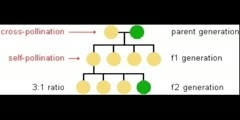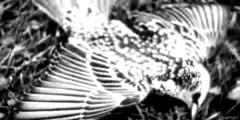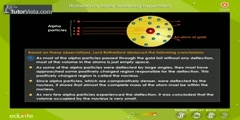Lec 5 - Plague (III): Illustrations and Conclusions
"Lec 5 - Plague (III): Illustrations and Conclusions"Epidemics in Western Society Since 1600 (HIST 234) One of the major cultural consequences of the second plague pandemic was its effect on attitudes towards death and the "art of dying." As a result both of its extreme virulence and the strictness of the measures imposed to combat it, plague significantly disrupted traditional customs of dealing with death. This disruption made itself felt not only in religious belief and burial practices but also in art, architecture and literature. European culture was profoundly shaped by the experience of the plague, as witnessed by the advent of symbols such as "vanitas" and the danse macabre in iconography, as well as the visual representations associated with the new cults of plague saints. The successful containment of the plague might be seen to have exercised a similarly powerful effect in shaping the philosophical project of the Enlightenment, in that the measures taken to ward off death gave material substance to theoretical claims of progress. 00:00 - Chapter 1. Effects of Bubonic Plague on European Culture 02:51 - Chapter 2. "Ars moriendi": The Art of Dying 07:54 - Chapter 3. "Mors Repentina": Death Unleashed 19:53 - Chapter 4. "Vanitas" and "Danse Macabre": Life as Transitory and Fragile, and Death as a Merry Dance 29:14 - Chapter 5. Cults of Plague Saints 37:24 - Chapter 6. Plague as a Factor in European Intellectual History Complete course materials are available at the Open Yale Courses website: http://open.yale.edu/courses This course was recorded in Spring 2010.
Video is embedded from external source so embedding is not available.
Video is embedded from external source so download is not available.
Channels: Sociology
Tags: Lec 5 - Plague (III): Illustrations and Conclusions
Uploaded by: yaleepidemicswso ( Send Message ) on 13-09-2012.
Duration: 44m 12s
Here is the next lecture for this course
Lec 3 -Plague (I): Pestilence as Disease
48:51 | 2880 viewsLec 4 - Plague (II): Responses and Measures
50:12 | 2298 viewsSome Important Medical Discussions
07:45 | 1920 viewsChemical Science-Atomic Theory of Matter ...
41:59 | 24692 viewsMendelian Genetics
04:58 | 17222 viewsRachel Carson DDT chemical pesticides
00:35 | 7569 viewsAlpha Scattering Experiment by Rutherford
01:30 | 7622 viewsExplanation Of Newton's Third Law Of Motion
02:14 | 8245 viewsPenn Jillette on The Fastest Way to Becom ...
06:27 | 3182 viewsLec 17 - Backward induction: ultimatums a ...
01:10:45 | 3571 viewsLec 1 - Introductions
47:36 | 2283 viewsLec 23 - Asymmetric information: silence, ...
01:10:37 | 3273 viewsLec 22 - Repeated games: cheating, punish ...
01:15:47 | 3200 viewsLec 96 - Roughing it on Great Brewster Island
02:21 | 2712 viewsLec 19- MIT 3.320 Atomistic Computer Mode ...
01:01:52 | 1915 viewsNo content is added to this lecture.
This video is a part of a lecture series from of Yale
















